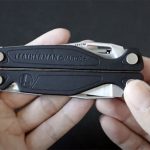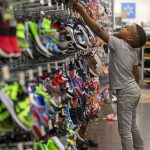SnowSports Industries America (SIA) released information from their SnowSports Consumer Panel. According to the study, skiers and riders are concerned about the economy, but they plan to participate as they always do, particularly if the snow continues to fall.
Research shows that snowfall is a much better predictor of participation and sales than the economy. Despite economic and logistical barriers, so far this season the snow is excellent and snow sports sales of equipment, apparel and accessories were up 9% driven by carryover sales. The results of the December 2008 SIA Consumer Panel and the SIA Retail Audit for August through November sales indicate that skiers and riders may pinch their pennies on the slopes this season, but they will be on the slopes.
Top-line findings are:
— Dismal economic conditions will affect the majority of snow sports consumers but they plan to limit spending by pinching pennies, not by canceling their plans to ski and ride this season.
— Snow Sports consumers are hunting for bargains and buying when they find them.
— Skiers and riders use the Internet to research gear and ski vacations before they purchase and more of them are purchasing online this season.
— Airline bag fees are keeping 1 in 5 skiers/riders from taking their gear with them when they fly.
— Half of snow sports consumers do not know they can ship their gear cheaply and efficiently to their destination using FedEx(R).
Additional findings include:
Each year, about 1 in 6 SIA panel members purchase new skis or a new board, but respondents purchase accessories and apparel every year.
This season, about one-third of the panel members said they plan to hold off on buying new equipment this season specifically because of economic conditions. Last season at this time, 28% of panel members told the SIA they would not purchase new equipment because they “didn't need anything new.” Their reasons for not buying equipment have shifted somewhat, but the number of consumers who will not buy has not shifted dramatically.
The SIA said most panel members use the Internet to research their snow sports vacation options and their equipment before they buy. Respondents also said they use the Internet far more to research products and services than they use it to keep up with athletes and events or to meet other people interested in snow sports.
They are clicking to buy more frequently too; online retail dollars sales are up 13% compared to August through November sales in 2007.
August to November 2008 snow sports retail sales were primarily driven by pre-season clearance sales. Sales of carryover gear accounted for a significant portion of snow sports equipment sales. Sales like the “SkiBonkers” sale in Seattle, which are dominated by leftover inventory from the past season, helped consumers find bargains on carryover items. (Carryover is officially defined as any item that sells for less than the average retail cost for that item.)
Carryover accounted for 30% of skis, 23% of snowboards, 21% of ski boots, and 23% of snowboard boots sold August to November 2008. Compare that to last season's August to November results when carryover sales accounted for just 20% of skis and 21% of snowboards sold and millions fewer dollars spent.
Sales of current year model alpine ski equipment paint a different picture of sales, with most ski categories down significantly. Ski prices are up across the board but dollar sales of skis (including carryover) are down almost 7% despite the increase.
Excluding carryover sales, current model alpine ski sales are down about 16%.















